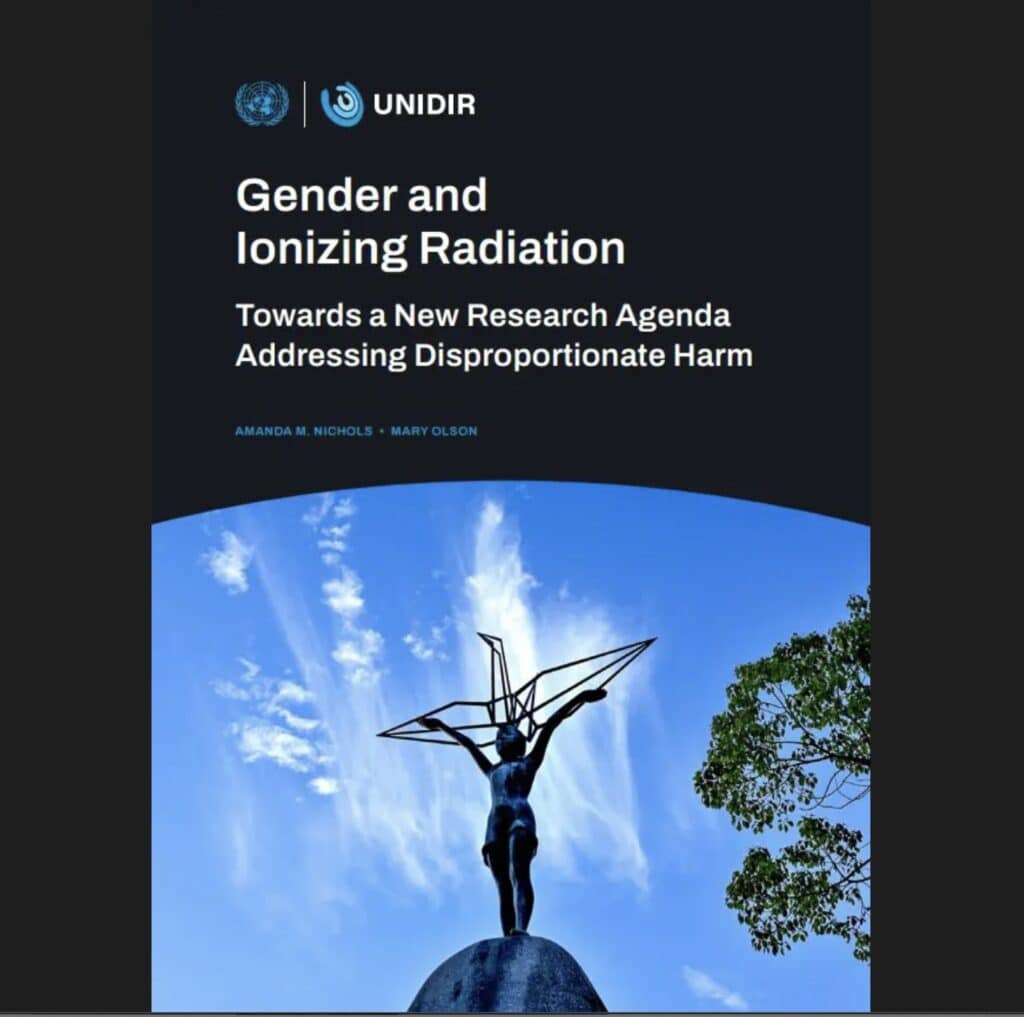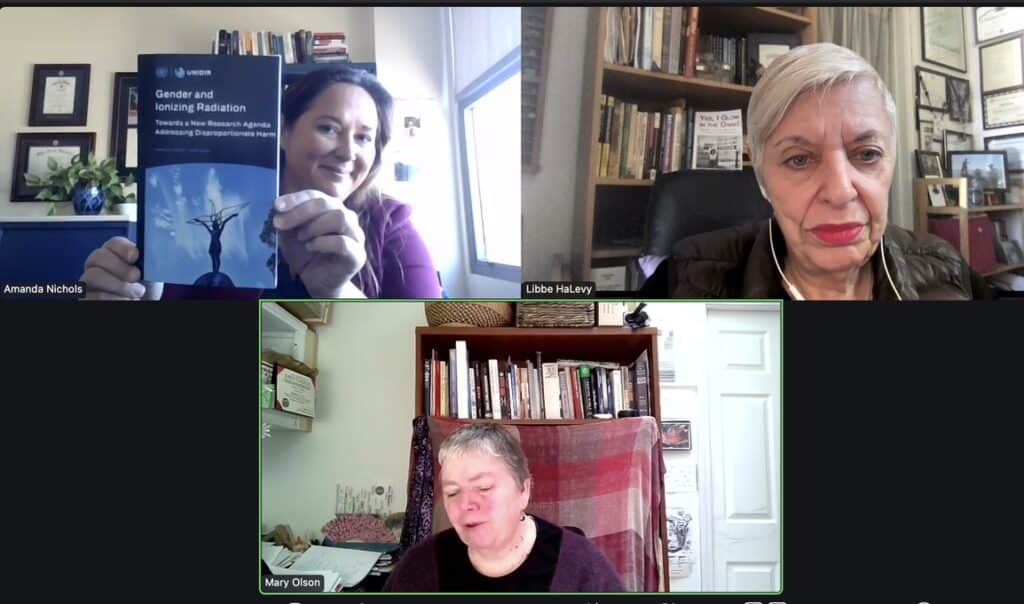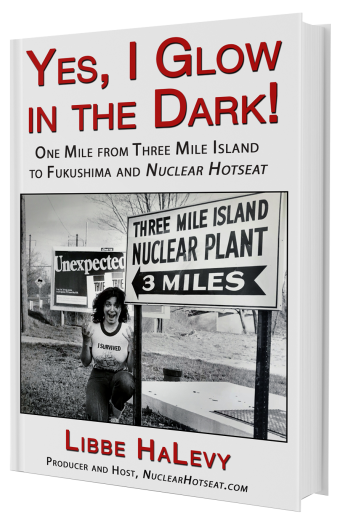NH #738: Women and Children Worst! Generational Nuclear Radiation Risks Revealed in New UN Report by Mary Olson, Dr. Amanda M. Nichols

United Nations report on the generational impact of nuclear radiation on women and children, written by Mary Olson of Generational Radiation Impact Project and Dr. Amanda M. Nichols.
This Week’s SPECIAL Featured Interview:
We all accept as proven scientific and medical fact that human exposure to ionizing radiation from nuclear weapons and their production is damaging to human health. But how do we know that? Who figures out how bad it can be? How much radiation we can be exposed to without risking our health? And how valid are those measurements?
We learn the alarming truth behind how those numbers were generated and what needs to be done instead from today’s guests, co-authors of the new report for the United Nations Institute for Disarmament Research, Gender and Ionizing Radiation: Towards a New Research Agenda Addressing Disproportionate Harm:
- Mary Olson holds a degree in Evolutionary Biology and has been an educator on radiation health impacts while serving nuclear-impacted communities… and so much more. Her website is RadiationProject.org
- Amanda M. Nichols, PhD, is a Postdoctoral Researcher in the Environmental Studies Program at the University of California, Santa Barbara. Nichols research focuses on illuminating the role of women in the North American anti-nuclear movement. Email contact: [email protected]
Gender and Ionizing Radiation: Towards a New Research Agenda Addressing Disproportionate Harm is cornerstone information in the movement to rid our planet of nukes. It is available for free downloa or pdf HERE.

Further References mentioned in the interview and additional Resources:
- Nichols, Amanda M. Women on the Edge of Time: Grief and Power in the Nuclear Age. PhD Dissertation. University of Florida (2021). https://original-ufdc.uflib.ufl.edu/UFE0057378/00001.
- Nichols, Amanda M. “Nuclear Energy,” in Chad Seales (ed.) The Handbook of Religion and American Culture. 2025.
- Nichols, Amanda M. “Uranium and Religion: Toward a Decolonial Temporality of Extraction,” Religions, 16(1). 2025. https://doi.org/10.3390/rel16010016.
- Olson, Mary. “Atomic Radiation Is More Harmful to Women,” Nuclear Information Resource Services, 2011. https://www.nirs.org/wp-content/uploads/radiation/radhealth/radiationwomen.pdf.
- Olson, Mary. “Disproportionate Impact of Radiation and Radiation Regulation,” Interdisciplinary Science Reviews 44, no. 2 (2019): 131–39.https://doi.org/10.1080/03080188.2019.1603864.
- Gender and Radiation Impact Project Website: https://www.genderandradiation.org/.
For BEIR VII Reports
- NAS-NRC. “Health Risks from Exposure to Low Levels of Ionizing Radiation: BEIR VII – Phase 2,” Committee to Assess Health Risks from Exposure to Low Levels of Ionizing Radiation, Board on Radiation Effects Research, National Research Council of the National Academies. National Academies Press, 2006. http://www.nap.edu/openbook.php?isbn=030909156X.
- NAS-NRC. “National Research Council – Committee on the Biological Effects of Ionizing Radiations: Health Effects of Exposures to Low Levels of Ionizing Radiation: BEIR V.” National Academy Press, 1990. http:// www.nap.edu/openbook.php?isbn=0309039959.
On International Radiological Protections and Reference Man
- ICRP. International Commission on Radiological Protection. 2002. Basic Anatomical and Physiological Data for Use in Radiological Protection Reference Values (2002). http://www.icrp.org/publication.asp?id=icrp%20publication%2089.
- ICRP. International Commission on Radiological Protection. Publication 103: The 2007 Recommendations of the International Commission on Radiological Protection (2007). https://journals.sagepub.com/doi/pdf/10.1177/ANIB_37_2-4.
- ICRP. International Commission on Radiological Protection. Publication 147: Use of Dose Quantities in Radiological Protection. 50, no. 1 (2021): 9–82. https://doi.org/10.1177/0146645320911864.
- ICRP. International Commission on Radiological Protection. “Official Definition of Reference Man.” Report of the Task Group on Reference Man. [ICRP Publication] No. 23. Oxford: Pergamon Press (1975). Adopted October 1974. Page 4. https://ieer.org/wp/wp-content/uploads/2009/01/definition-of-reference-man.pdf.
Nuclear Hotseat Hot Story with Linda Pentz Gunter:
Nuclear is in hot water of its own making – and if spineless jellyfish can shut down a nuclear reactor, why can’t we?

Ever notice now much jellyfish resemble the nuclear mushroom cloud…?



